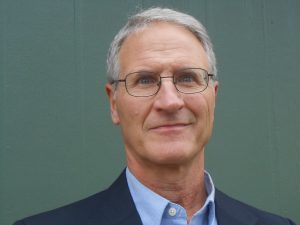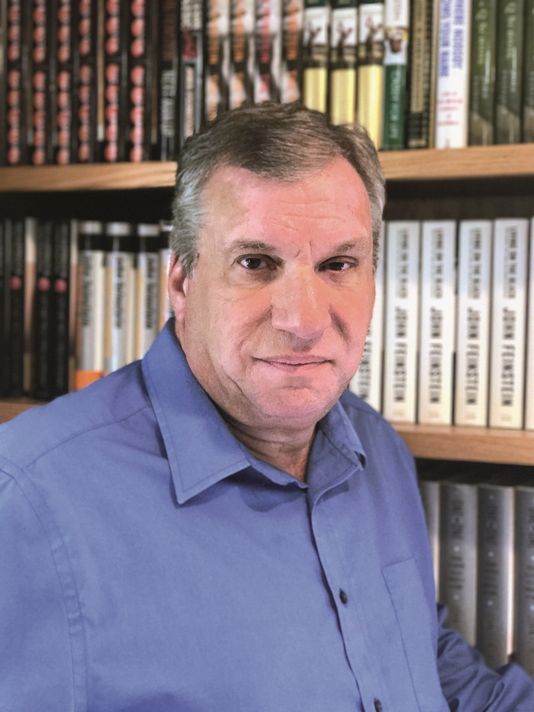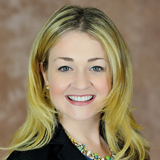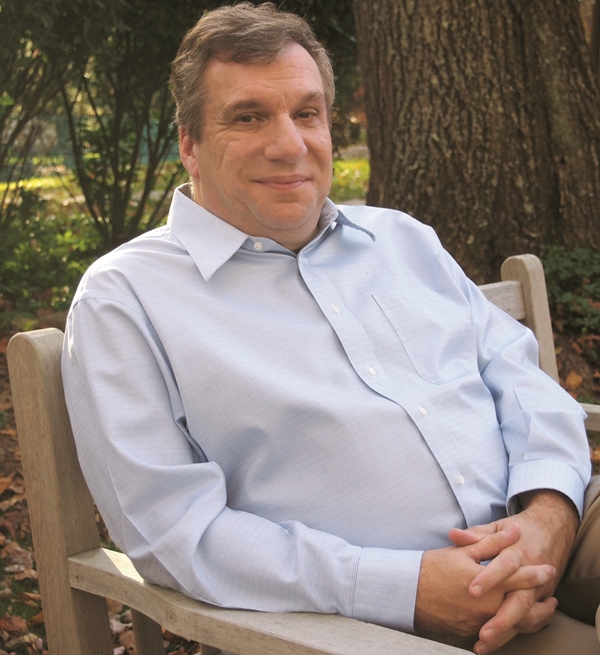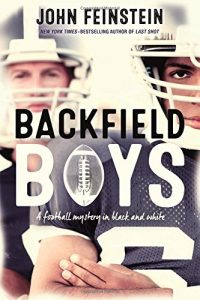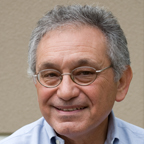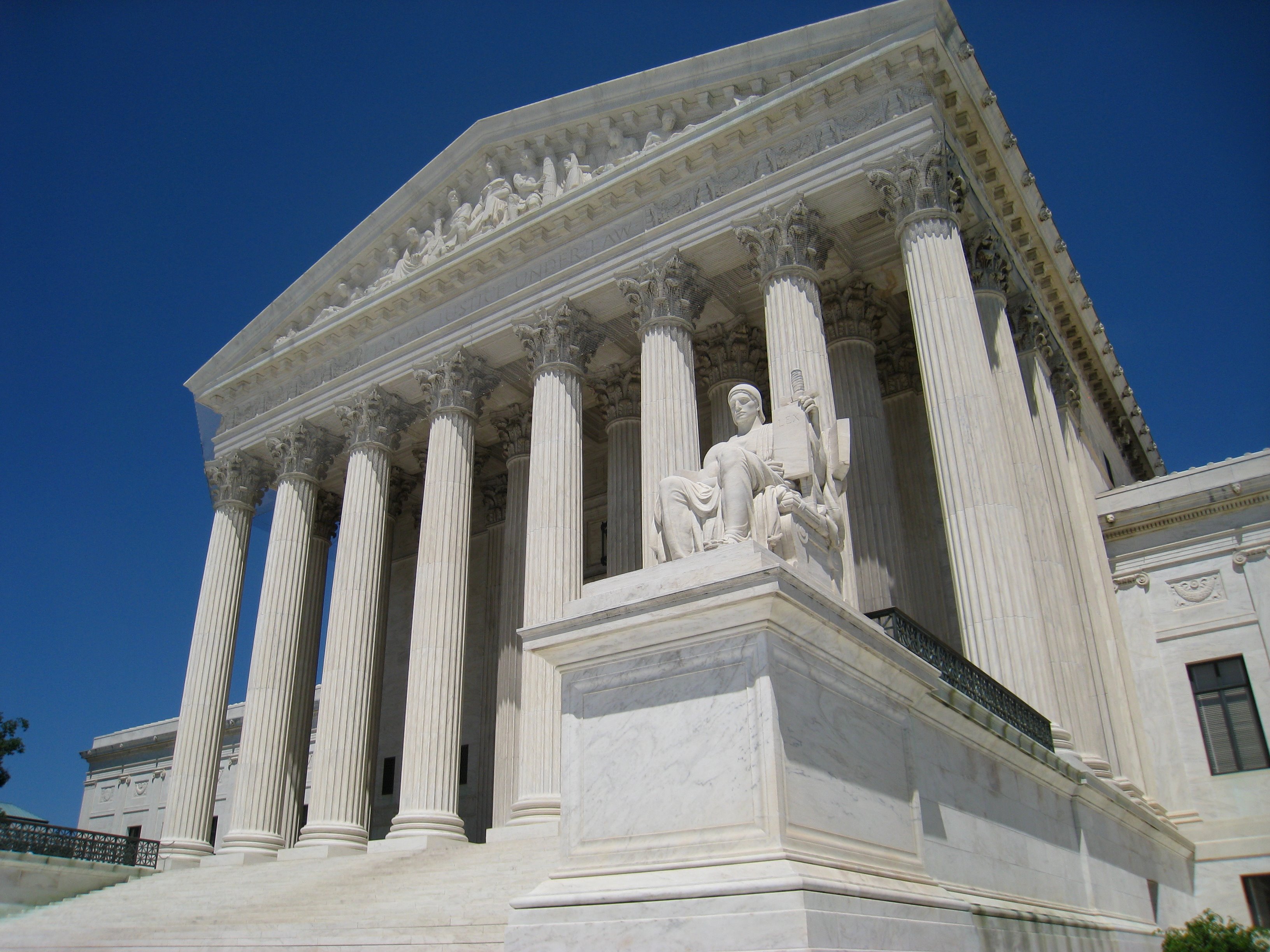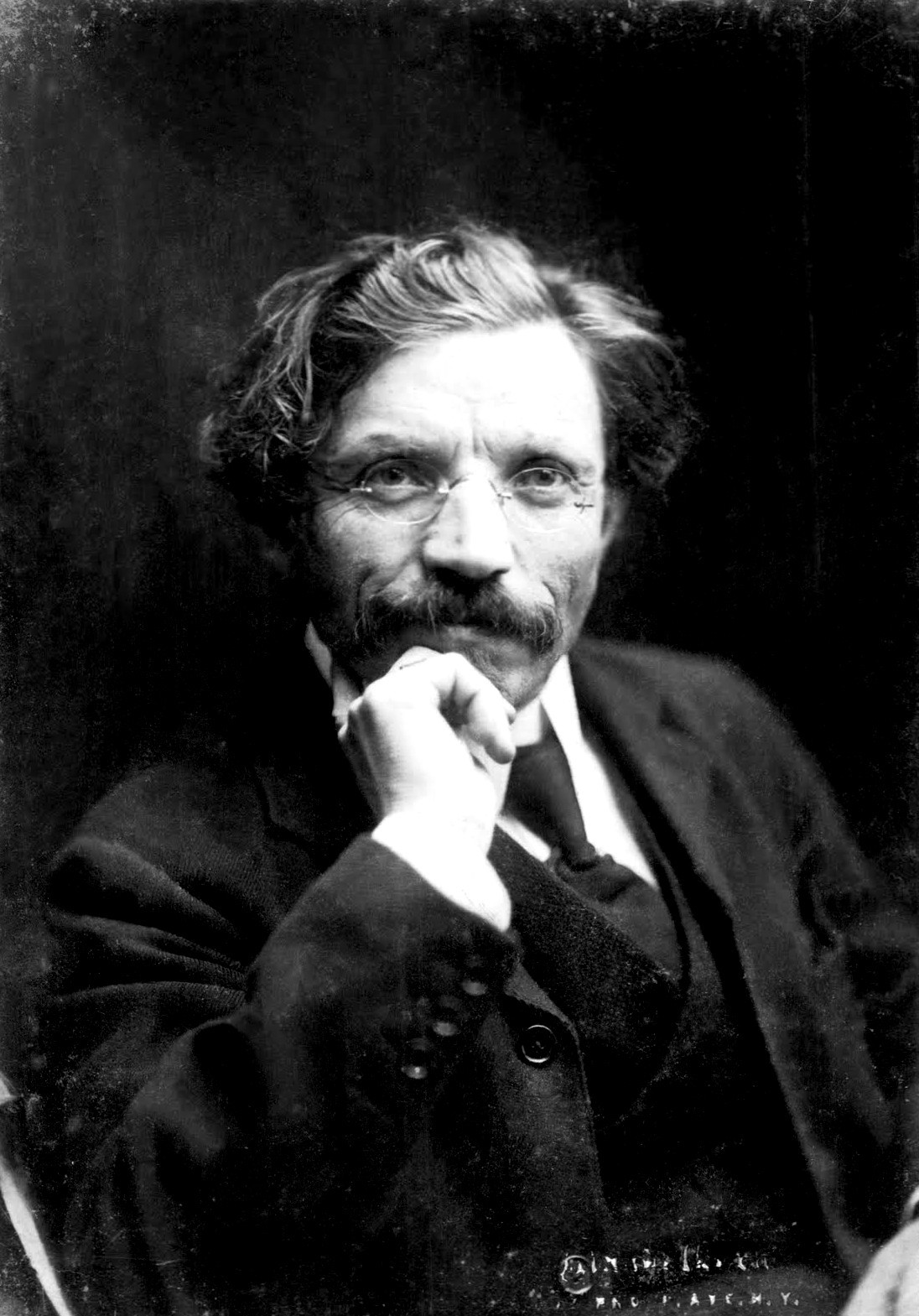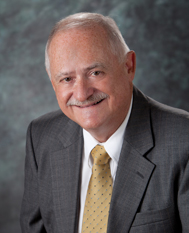
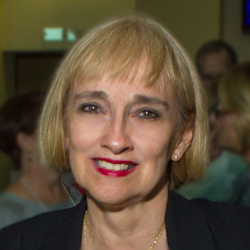
By Sandi Page, Member, FAU Osher LLI Jupiter Marketing Committee member
I think you will all agree that the Winter 2018 Class Catalog is one of our richest offerings yet…a true smorgasbord for the intellect.
A huge shout-out goes to our Osher Lifelong Learning Institute at FAU, Jupiter staff who work so hard behind the scenes to consistently put together a delectable choice of lectures and courses to please just about any of our students’ sophisticated palates.
So, step right up to the buffet table and don’t just stick with the chicken and beef.
Try out some courses and professors whose work is unfamiliar to you!
Here are a few of the tasty items on the menu:
SOME OF OUR WINTER 2018 LECTURES
Robyn Lamp and Edgar Miguel Abréu
Operatic Love Duets
Wednesday, January 3, 2018; 7 – 8:30 p.m.
Opera can be a little intimidating. What do I wear? When do I clap? Do I research what I’m seeing beforehand? It can be a little much when it’s your first time, but fear not! This concert will give you a little taste of what you’ll see in the opera house! Opera is telling stories through music. It’s not elitist, it’s not pretentious. It is for everyone to enjoy. Alex Reedijk, the General Director of the Scottish Opera once said that “Opera is the stuff of life. It is the ultimate expression through live performance of the human condition, of all that we feel, fear and care about. Storytelling is a fundamental human need, and there is nothing that can beat opera as a way of telling the stories that need telling, the stories that help us to understand what it is to be human.” Edgar and I are offering some of the most beautiful love duets written for tenor and soprano. We will be singing in many languages and translations of everything will be projected so you can keep track of what is happening. Come to this concert to try something new, to lose yourself in beautiful music, and to experience some great storytelling! Oh, and don’t be afraid to clap whenever you want!!
Carol Adelman, Ph.D. and Ken Adelman, Ph.D.
History’s Greatest Battle and Love Story
Thursday, January 4, 2018; 11 a.m. – 12:30 p.m.; Book-signing: 12:30 – 1 p.m.
After years of sell-out crowds at FAU for inside scoops and funny stories about Reagan, Nixon, Johnson, etc., why change a popular formula – from contemporary characters everybody knows, to ancient folks nobody knows? For several reasons. I wanted to do the next FAU gig with my wife, Carol, who is a terrific presenter, best in the family. Together, we do most of our professional appearances.
Second, because this, too, is a fabulous story — of Britain’s greatest king winning Britain’s most stunning victories, and then winning the Princess of his defeated foe. Win the country, love and marry the Princess.
Third, because we tell this tale through film clips. Everyone loves going to the movies — even for brief scenes.
Last, to help FAU learners overcome a natural Shakes-fear. Everyone “knows” that Shakespeare is boring and unintelligible, with characters speaking in foreign tongue with only smatterings of English. But none of this is true.
Carol and I have been presenting Shakespeare to corporations as part of their executive training since 1997. Come see why this approach has been a smash for 20 years, why Shakespeare has been at the top of the charts for 400+ years, and why King Henry Vth has been celebrated as Britain’s greatest king for 600+ years.
Yoko Sata Kothari
Classical Concert Series: Love Triangle at Classical Piano – Romantic Music by Brahms and Mr. & Mrs. Schumann
Thursday, January 4, 2018; 2 – 3:30 p.m.
You don’t like classical music? Some of you think it is too complicated, difficult, and even boring. Alright then, what about love stories? Are you interested in listening to one? This concert is about 3 composers who were in love. Being a storyteller at the piano, my mission is to talk about this historical true love story as well as to perform their music. The program is full of music which is bitter and sweet, painful and joyful…I believe it’s something all of us can relate to in one way or another.
If classical music has not been what you normally listen to, this just may be the time for you to try it. It’s like trying a restaurant you have never been to before…you’ll never know how you will feel unless you go. So get out of your comfort zone and join me at this concert! I look forward to seeing you and getting feedback from you.
Ira Epstein, Ph.D.
The Comedy of Carol Burnett
Thursday, January 4, 2018; 7 – 8:30 p.m.
What pivotal role did Carol Burnett‘s grandmother play in her development? What one episode of her popular show was rejected by the CBS censors? Why did Carol Burnett refuse to perform her famous Tarzan yell in public? Come, learn and laugh!
Felicia Survis, Ph.D.
Bottled Water: The Improbable Commodity
Monday, January 8, 2018; 1:30 – 3:00 p.m.
Have you ever wondered whether bottled water is a better choice than tap water? Why has bottled water become such a big industry? Before you take your next sip of water, ask yourself, do you know where it is coming from and what type of testing it has been subject to? In this engaging lecture, we will explore the world of drinking water and specifically look at the evolution of bottled water, from Perrier to Aquafina, and how that has forever changed the way people think about tap water.
Robert Milne
Ragtime and Classical Music: A Comparison to Beethoven, Mozart and Others
Saturday, January 13, 2018; 1 – 2:30 p.m.
Beethoven didn’t write ragtime. Neither did Mozart or J.S. Bach. However, the principles of good music are the same between both of these amazing forms of art. Bach learned composition by listening to others, as did Mozart. Beethoven studied briefly with Hayden, but most of the great classical composers didn’t study with anyone at all. The same is true in the field of ragtime. Great composers, such as Joseph Lamb and James Scott, never went near a composition class, and both of them wrote pieces still being played today. Scott Joplin was already a good composer and pianist long before he attended the George R. Smith College in Sedalia for two years. This class will heighten your awareness of what you hear next time the symphony orchestra, or the corner barroom piano player, cuts loose with another classic.
Bert Diament, Ph.D.
The Dynamics of Prejudice, Discrimination and Stereotyping
Monday, January 22, 2018; 1:30 – 3:00 p.m.
If “prejudice” means judging someone before you actually know much about them, then I must be prejudiced. I am immediately annoyed with people who nonchalantly ask me “How are you?” because I know that most people really don’t care how I am! I am often tempted to respond with a litany of complaints about my health, our fractured politics, my deteriorating tennis game, etc. Sometimes, my response to this insincere inquiry is “Compared to what?!”
Another remark, which I experience as disingenuous, is when meeting someone for the first time, I am told “Nice to meet you!” Sometimes I respond with “How do you know? I may be a serial killer!”
My point is that all of us, on some level, are prejudiced, forming opinions of people in an instant, before we really get to know them, based on some personal, often not well articulated, idiosyncratic preference or judgment about their behavior.
A sign in my office reads: “Please take my advice, I am not using it” and, therefore, I recommend to you to be aware of your immediate reactions and reserve judgment until you get to know an individual better, and resist the temptation to respond negatively as I sometimes do.
Richard René Silvin
Mar-a-Lago, from Post to Trump: The History of a Classic Palm Beach Mansion
Tuesday, February 6, 2018; 11:15 a.m. – 12:45 p.m.
In 1923, Marjorie Merriweather Post, the Post Cereal heiress who built Mar-a-Lago, sailed into Gloucester, MA, aboard her husband E.F. Hutton’s magnificent yacht, the Hussar IV. A few days
later, sailing up the coast of Maine, her chef served them fish. Mrs. Hutton (Marjorie took three of her four husbands’ names) questioned her chef: how could the fish still be fresh when it was loaded aboard in Gloucester? The chef explained he had met a man on the docks in Gloucester who was experimenting with “frosted foods.” The man’s name was Clarence Birdseye. It took Mrs. Hutton three years to convince her skeptical husband of the long-term validity of the concept. Realizing his error, Hutton acquired Mr. Birdseye’s operation in 1927 and merged it into the Post Cereal Company, thus creating the General Foods Corporation. Of course, Mrs. Post was correct in her clairvoyance: “Frosted foods” became frozen foods and can now be found in every grocery store across the world.
Alex Dreyfoos and Steven Caras
The Life and Art of Alexander Dreyfoos: A Conversation with Mr. Dreyfoos and Steven Caras
Thursday, February 8, 2018; 10 – 11:30 a.m.; Book-signing: 11:30 a.m. – 12 p.m.
It’s rare enough when children are equally interested in all things of interest to their parents. Yet it’s another thing entirely when a young person combines all those elements – in Alex Dryfoos’s case – photography, innovation, classical music – before setting out to achieve remarkable, life-saving, award-winning accomplishments.
From commanding a U.S. Air Force photo lab involving daily, 3-minute turn-around life or death decisions (deemed “one of the most important, dangerous, missions during the cold war era”) – to receiving an Academy Award for the advancement of photo-electronic equipment – to organizing a Palm Beach County Cultural Council with a specific objective to create what we now know as The Raymond F. Kravis Center for the Performing Arts, the list of his extraordinary achievements goes on.
The title of the Dreyfoos autobiography is Passion & Purpose. Passion and purpose indeed. Come engage in a conversation as Dreyfoos speaks candidly with friend and fellow photographer Steve Caras, covering a life spent building dreams – his own, and those of countless others.
Robert Milne
The Art of Improvising
Saturday, February 10, 2018; 1 – 2:30 p.m.
No one knows better than Bob Milne about improvising music: he’s done it for fifty years to, as he puts it, “keep the audience from going to sleep.” When music becomes predictable, it loses spontaneity, and the trick to doing this is, again says he, to “never play anything the same way twice.”
O.K., Bob, easy for you to say. Want to share some of that with us?
“Sure, I’d be happy to. First of all, take your eyes off the music. Secondly, close your eyes: make your fingers do the walking. Thirdly, don’t always use the same note in the bass…”
C’mon, Bob. Can’t you do any better than this?
“Well, uh, actually I can, but it’s easier to demonstrate than to write out in a speech. Come to the class and you’ll be able to follow it much better with your ears. Seeyah and Hearyah there.”
Daphne Nikolopoulos
Mysteries of the Anasazi: An Exploration of the Advanced Civilization – and Mysterious Disappearance – of America’s First People
Tuesday, February 20, 2018; 9 – 10:30 a.m.
In researching my newest novel, Firebird (due out in late 2018), I ventured to the Four Corners area of the American Southwest to investigate Native American cultures of the past and present. I spent time with the archaeologists of the Salmon Ruins historical site, venturing into active excavation areas near Kutz Canyon and delving into the ancient mysteries of Chaco Culture National Historical Park.
In this class, I will share parts of my research with LLI students, illuminating such concepts as the astronomically precise building and mind-boggling infrastructure at Chacoan sites. The ancestral Puebloans aligned their impressive structures with lunar and solar events, such as the major lunar standstill, and hid a sophisticated cosmology and symbology within their architecture that archaeologists are still struggling to interpret.
This begs the question: What caused this seemingly well-organized, complex civilization to suddenly vanish? We will examine the theories—ranging from environmental influences to a violent turn to cannibalism—to develop a deeper understanding of the ancestral Puebloans and their influence on modern Pueblo people.
Join me for a look at the “Anasazi” and their mysterious, awe-inspiring sites, which are true treasures of earliest American history.
Michael Tougias
America’s First Major War: King Philip’s Indian War and the Shaping of America
Tuesday, February 20, 2018; 11:15 a.m. – 12:45 p.m.; Book-signing: 12:45 – 1:15 p.m.
Did you know that America’s very first war also had the highest casualty rate of any war involving America? King Philip’s Indian War was a turning point in American history, and the outcome of the war hung in the balance for 12 months. At my slide lecture, I’ll take you from the start of the war (and why it happened) through the battles to its ultimate conclusion. The battle sites are scattered throughout New England and many are worth visiting. I co-wrote the King Philip’s War history book to give the reader an appreciation of the dramatic twists and turns of the war. I wrote my historical novel, Until I Have No Country, to allow the reader to see the war from both the perspective of the Indians and the Colonists. I hope to do the same at the lecture, and insert the viewer into the war and “time travel” back to 1675-76!”
Myrna Goldberger
Discount Shopping and the Mega Stores
Wednesday, January 3, 2018; 11 a.m. – 12:30 p.m.
The Web as the Marketplace
Saturday, February 24, 2018; 1 – 2:30 p.m.
As I was preparing for my fall and winter lectures at LLI, my priority was to find subjects that were gender friendly, age friendly and non-controversial. I decided to research the advent of the credit card and, in thinking about where it is used, my community informal survey suggested restaurants and malls. I am not a “foodie” so that left the rest of the shopping world. I learned that the founder of Macy’s was part of the whaling community in Nantucket. I learned that the Gimbel stores were born because the patriarch had seven sons and needed a way to feed all of them, that Alfred Bloomingdale had a shrewd, calculating mistress, that Nordstrom’s birthplace was 60 miles from the Arctic Circle. Finally, what clinched my interest was the discovery that department stores sprouted up because of a single invention. Without it, we may never have had any of the stores we can so easily name. I revealed that invention during my fall lectures on the history of department stores and their tycoons and will reveal the answer again to my winter students! Come to my January lecture about discount shopping and mega stores and my February lecture about on-line shopping as we continue the saga of America’s favorite pastime together.
Taylor Hagood, Ph.D.
Hagood Reads the Phone Book: Nashville
Monday, February 26, 2018; 3:45 – 5:15 p.m.
The latest installment of my phonebook lecture series focuses on the city of Nashville, Tennessee. Many know about the city’s country music industry, but less known is that Nashville has a strong history in higher education and sophisticated institutions that has caused it to be called the “Athens of the South.” In fact, few places blend high and low culture in such a compelling way as Nashville, and this one-time event will feature a host of curious, famous, and infamous characters from Andrew Jackson to Minnie Pearl.
Ronald Feinman, Ph.D.
Two Giant Figures in the Pre-Civil War U.S. Senate: Henry Clay and Daniel Webster
Tuesday, February 27, 2018; 9 – 10:30 a.m.
Henry Clay and Daniel Webster are the two most famous and renowned U.S. Senators in the pre-Civil War period of American history.
Both are seen as among the top ten U.S. Senators in all of American history. The U.S. Senate in 1957 chose them as two of the top five Senators until that time, and commissioned busts of all five to be created, and placed in the U.S. Senate chamber. Both were magnificent orators; both served as Secretary of State; both were Presidential candidates; both were seen in their lifetimes as statesmen, rare for politicians. Both failed to become President, although they were more outstanding and distinguished than most of the political leaders of their times in public office. Both promoted the idea of Union over secession, and contributed to the goal of preservation of the nation as one, working against the concept of civil war. Both Clay and Webster were leading figures in the Whig Party, and both died in 1852, with Clay dying four months before Webster.
Douglas J. Wessel, Ph.D.
Introduction to the Psychology of Religion: From Transformation to Terrorism
Tuesday, February 27, 2018; 11:15 a.m. – 12:45 p.m.
Ever since the dawn of modern science during the Renaissance, the demise of religion has been predicted. However, even though science and technology have certainly led to a greater understanding of the universe and provided the means to many improvements in our quality of life, religion has persisted. The trends toward monastic naturalism and secular humanism have been influential in some parts of the world and among some age groups more than others, but in other areas, religion is as pervasive and intense as ever.
In general terms, religion provides answers to questions about life that are outside the realm of science, about the meaning of our existence, dealing with an uncertain future, and inevitable death. Science and religion could be thought of epistemologically as two different ways of knowing that have unique roles in our understanding. In my lecture, we will utilize the science of psychology to learn about why people are religious, independent of any metaphysical assumptions, and the role of religious beliefs, attitudes, and behaviors in important facets of life. Religion continues to be a powerful force in our world, both for good and, all too often, associated with death and destruction.
James M. Adovasio, Ph.D., D.Sc.
Early Human Populations in the New World: A Biased Perspective
Monday, March 5, 2018; 3:45 p.m. – 5:15 p.m.
I have been involved in anthropological archaeology for nearly half a century. Over a significant segment of that time, I have been involved in the excavation and attendant analyses of one of the oldest archaeological sites in the New World, Meadowcroft Rockshelter in Washington County, Pennsylvania. Like so many very early archaeological sites in North and South America, Meadowcroft was not discovered by me but rather reported to me by an interested amateur prehistorian. I originally elected to work at Meadowcroft as a locus for training students in the protocols of then contemporary archaeology. I had absolutely no idea at the time that the site would prove to be extremely ancient or that it would contribute to the unraveling of the then paramount paradigm about the entry of humans into the New World. The point here is about the serendipity, or “blind luck,” often inherent in many so-called archaeological discoveries. Had I set out to actually locate a site like Meadowcroft, I indubitably would have failed to find such a place. This is often the case, not just in the New World, but around the globe as well. The basic message here is that it is great to be well prepared but even better to be lucky.
Tom Poulson, Ph.D.
Exploring Nature: Beguiled by the Wild
Wednesday, March 7, 2018; 11:15 a.m. – 12:45 p.m.
Here are two examples of how we will use scientific natural history to discover specializations of plants. First, we will observe the propagules of plants to hypothesize how they move away from the parent plant; this is dispersal. The propagule is the seed plus any structures that help it to disperse. Many of you will know dandelions whose propagules have a feathery top that floats in the wind. Here is my limerick about other kinds of objects that may or may not be propagules.
A fun lovin’ natch-ralist TP
Exhorts his students not JUST to see.
Tests of taste, touch, and smell
Range sublime to pure hell,
Cherries, sand burrs, and smart pills, Tee-hee!
Second, observe the plant that is not Spanish and not moss hanging in festoons from trees, especially oaks. Use natural experiments of where the plant is and is not on the tree and how the tree is doing in these two conditions. This will test alternative hypotheses. Is it competing with the tree? Is it helping the tree? Is it a parasite of the tree? Or is it having no effect on the tree?
SOME OF OUR WINTER 2018 COURSES
Paul Mojzes, Ph.D.
Less Well-Known World Religions
Mondays, Jan, 8, 22, 29, Feb. 5, 12, 19, 26, Mar. 5, 2018 (No class on Jan. 15); 9 – 10:30 a.m.
From the dawn of civilization, innumerable religions emerged in all known human communities. Every tribe had their own beliefs, rituals, codes of conduct, and patterns of organization. Some of these ancient, mostly tribal, religions still exist. In the past, we tended to name them “Primitive Religions” but the word “primitive” has a negative connotation so most scholars use the term “Primal Religions.” In this course, we’ll take a look at several characteristics of primal religions which still exist scattered around the world and even persist hidden in contemporary major religions.
Approximately 2,800 years ago, the so-called “axial age” occurred which began to give rise to the great historical religions. Some of these died out but many survived and even thrive in our own age. Judaism, Hinduism, Buddhism, Christianity, and Islam could be called the “Big Five” and they are better known by most people. But there are others, not “lesser” but “less well-known” by us in the West, which are subjects of this course. At each of the class sessions, I’ll provide an overview first of the great religions of the Orient, namely Chinese originated Confucianism and Taoism and Japanese Shinto, then Indian religions of Jainism and Sikhism, and, at the end, the Iranian Zoroastrianism and a 19th Century Islamic outgrowth called the Baha’i World Faith.
I have had direct experiences with many aspects of these religions during my study travels in Asia. I will provide an overview of the life and teachings of the founder (if there is one) or early stages of these religions, then point out some crucial changes in their development, with some video clips to help us envision the many picturesque manifestations of these religions. However, I hope you will not expect to be entertained and educated the way Anthony Bourdain does it on CNN.
Robert G. Rabil, Ph.D.
U.S. National Security
Mondays, Jan. 8, 22, 29, Feb. 5, 12, 19, 26, Mar. 5, 2018 (No class on Jan. 15); 11:15 a.m. – 12:45 p.m.
This course on U.S. National Security underscores some of the most challenging issues facing our country. Significantly, these issues cannot be separated from their local, regional and international dimensions, whose political parameters have been set by poor domestic legitimacy, tenuous regional orders and conflicting global outlooks. To be sure, the United States is dealing with a multitude of challenges grounded in fluid political environments, while at the same time Washington is trying to set its foreign policy imprint in line with its composite definition of “America First” orientation. Each lecture of the course is based on fresh insights, grounded in primary sources and personal intellectual exchange with experts and officials.
The first lecture examines the nuances and the grey area of the U.S. military’s strategies and tactics in Iraq and the consequences of their applications. The second lecture draws the dramatic picture of the Sahel region, whose peoples have been afflicted by insecurity, unemployment, and desertification. Their hopes of a better future have already clashed with harsh realities. The third lecture exposes the operational hideout of policymakers who seek secrecy and intercession to launch their policy initiatives. The fourth lecture investigates the controversial Islamist Gulen and probes the growth and orientation of the Gulenist Islamic schools in the United States. The fifth lecture explores the strategies (and their ramifications) of the countries bordering the Arctic region as each one of them scrambles to geopolitically and financially profit from the region’s resources. The sixth lecture visits the unfolding developments in Syria within the context of regional and international rivalry, sectarianism and fighting jihadism. The seventh lecture probes French domestic policies that seek to substitute “assimilationism” for “multiculturalism” while trying to meet the challenge of Islamism and Salafism. The eighth lecture assesses the U.S. campaign against terrorism, underscoring its pitfalls, failures and successes.
As usual, the course tries to rise to the expectations of lifelong patrons by engaging in the most proactive research and analysis! And still tries to exude humor about what we (community of South Florida) encounter and appreciation for what we have!
Kurt F. Stone, D.D.
Words and Music: Hollywood Recycles the Classics
Mondays, Jan. 8, 29, Feb. 5, 12, 19, 26, Mar. 5, 12, 2018 (No class on Jan. 15, 22); 7 – 9 p.m.
SCORING MOTION PICTURES: Making a So-So Film Good and a Good Film Great
All movie buffs know that films began to talk in the late 1920s. Needless to say, it wreaked havoc within the industry; many great stars couldn’t speak English – or had voices, accents or impediments which betrayed their image with the movie-going public. What many don’t realize is that when movies started talking, it also required composers and arrangers to provide music-on-film.
The first complete movie score was composed and directed by the great Max Steiner, who would eventually amass 20 Oscar nominations and 3 wins. That film was the 1931 Oscar winner, Cimarron; history records that it almost never happened. Then-RKO head David O. Selznick was the one who decided the picture should have a complete musical score, and so asked Steiner, the head of RKO’s fledgling music department, “Who can we get to write the music for Cimarron?” Steiner said “How about Stokowski?” Selznick agreed and Steiner called Stokowski who said he would be delighted to do it for $300,000. Upon hearing this, Selznick almost had a stroke and told him to get hold of Gershwin. Gershwin said he’d certainly do the composition – for $250,000 – but would need at least a year.
“But Max,” Selznick screamed, “we’re opening in four weeks!” He then told him, “Max, put a temporary score on it; any old thing will do. How soon can you have it completed?” “Well, it’s Friday afternoon,” Steiner said. “Can you hold on till Monday morning?” Steiner went home and spent the entire weekend composing and arranging the film score. Cimarron opened on time – precisely four weeks later. The day after its premiere, the papers came out and reported that the picture was excellent. And what about the music? More than one movie critic proclaimed it “The greatest music that ever was written!”
For his herculean efforts, Steiner received a $50 bonus. And thus was born a new art form . . .
Taylor Hagood, Ph.D.
Shakespeare Retold II
Tuesdays, January 9, 16, 23, 30, February 6, 13, 20, 27, 2018; 1:30 – 3:00 p.m.
This winter, I’ll be offering another eight-week course on a selection of both famous and obscure Shakespeare plays. Just like last winter’s Shakespeare series, my goal is to do a kind of translation-performance of Shakespeare that makes the plays immediate and alive by delving into the motivations of the characters. This is a fun approach to Shakespeare that works through the barrier of early modern English to show how the plays are fresh and timeless enough to have been written yesterday. This Shakespeare course will be entertaining as well as educational.
Penelope Fritzer, Ph.D. and Margery Marcus, Ed.D.
The Art of Detective Fiction: What Evil Lurks
Thursdays, January 11, 18, 25, February 1, 2018; 11:15 a.m. – 12:45 p.m.
Colleagues as well as friends for over 30 years, Penelope and I both agree that there is nothing more delicious on a miserable, rainy night than a good detective novel. What we disagree on is what that novel should contain. Penelope likes them classical and bloodless; I prefer them graphic and dark. In this series, we deliver the gamut from the earliest detective novels to some of the most recent. Penelope relishes Agatha Christie and wrote her Master’s thesis on the “grande dame;” I am so enthralled with Canadian author Louise Penny, I want to move to her fictional town of Three Pines. (Yes, I know it’s not real, but, like Brigadoon, I keep hoping it will suddenly appear.) Our four-week series provides an overview of detection fiction and looks at our favorites, and, I hope, yours. Each session concludes with a book list guaranteed to provide you with great reads for a long time.
Irving Labovitz, J.D.
Objection! Current, Contentious and Confusing Legal Battles
Thursdays, Jan. 11, 18, 25, Feb. 1, 8, 15, 22, Mar. 1, 2018; 1:30 – 3:00 p.m.
Mark Twain once wrote: “Sorry this letter is so long, but I didn’t have time to write a shorter one.” The same might be said for attempting a brief description of my weekly class content not otherwise fulsomely described in your LLI catalogue. While its weekly structure is usually ‘driven’ by legal and Constitutional events of significant magnitude and concern directly affecting each of us and our families, our interactive dialogue does not attempt sagacity in anticipating resolutions, but rather addresses the import of such happenings and potential for resolution by one, or more, of the three co-equal branches of our Representative Democracy.
We hardly ever ‘solve the problem’, but each class is usually successful in: identifying and clarifying the complex and contentious legal issues du jour; considering any judicial precedents, and anticipating alternative potential resolutions in each instance by the implicated Judicial Department, Congress, or the Executive Branch; always keeping in mind that the final arbiter of the Constitutionality of any contested matter remains the Judiciary.
This course is not for everyone…just those who wish to be equipped each week with undisputed facts, accurate historical legal precedents, and the alternative legal and Constitutional theories for resolution; while contemplating that which is the “best prospective solution” in each instance remains with each student to await actual events.
As Sergeant Joe Friday often said on television’s ancient series, Dragnet…”just the facts, ma’am.”
Benito Rakower, Ed.D.
Eight 21st Century Films – The Reinvention of Cinema
Fridays, Jan. 12, 19, 26, Feb. 2, 9, 16, Mar. 2, 9, 2018 (No class on Feb. 23);1:30 – 4 p.m., Film discussion 4 – 4:30 p.m.
Shakespeare gave one of his most famous and baffling comments to a garrulous fool, “To thine own self be true…” I have never come across a persuasive explanation of what that means. But I can feel its pertinence to sanity, dignity, and serenity.
In a somewhat related context, only one novel has ever given me an understanding of the elusive, American male psyche. It was Patricia Highsmith’s Strangers on a Train. Nothing by F. Scott Fitzgerald, Hemingway or Herman Melville could rival it. How had a woman in her twenties, an English major at Barnard College, ever conceived the perfect structural form and profound psychology of this novel? The chapters alternate between the lives of two totally disparate men, one a handsome and brilliant young architect, the other a grotesque and despicable playboy. Hitchcock bought the film rights almost immediately and made a widely admired film version in which the architect becomes a tennis player engaged to a Senator’s daughter. Highsmith then turned her attention to an entirely different novel, The Price of Salt, published in 1952 under a pseudonym. It was later republished under the title Carol, which is also the title of the film as it appears in my winter film course. Carol was the first unequivocally lesbian novel with an unprecedented happy ending. Patricia Highsmith did not want to be identified as a lesbian writer, hence the pseudonym. She went on to become an immensely popular crime novelist. It was only in Europe that discerning readers recognized her “true” gift. An unswerving and relentless depiction of American men caught in the web of “success,” the suppression of their tangled sensitivity, and the tyranny of masculine role models. Carol was Highsmith’s only venture into a genre closest to her heart. The film Carol was nominated for six American Academy Awards and nine British Film Awards. It is a milestone in the exploration of Freud’s most famous question, “What do women want?”
Mark C. Schug, Ph.D.
Let’s Visit Four Key World Economic Regions: An Economic Analysis of Places You Might Want to Visit
Thursdays, February 8, 15, 22, March 1, 2018; 3:45 – 5:15 p.m.
So Many Hotspots, So Little Time
When I put this course together several months ago, I had no idea that each economic region I wanted to discuss would be featured so prominently in the headlines.
Tensions in North and South Korea have risen sharply since Kim Jong Un made unexpected progress on his nuclear program and is now lobbing missiles over Japan. Scary. I will trace the diverging economic paths taken by North and South Korea and will imagine what might happen next.
After the recent 19th Congress of China’s Communist Party, Xi Jinping has emerged as the strongest Chinese leader since Mao Zedong. What is the source of China’s economic miracle that has lifted millions of people out of poverty? Join us to learn what happened before and what might happen next.
Relations were supposed to be thawing with Cuba. Think again. I had to cancel my plans to visit because the U.S. State Department now says Cuba is not safe for Americans. But aren’t things getting better for the Cuban people now that Fidel is dead? I’ll be discussing that and more.
And then there is Brexit. Margaret Thatcher warned British citizens that joining the EU was not going to lead to the bright economic future that many envisioned. Is the EU too bureaucratic to succeed in the long term? How will its relationship with Britain change? Will the unexpected emergence of President Macron of France usher in a new era of economic growth on the continent? My final lecture of this series will be about the nature of the EU, its future.
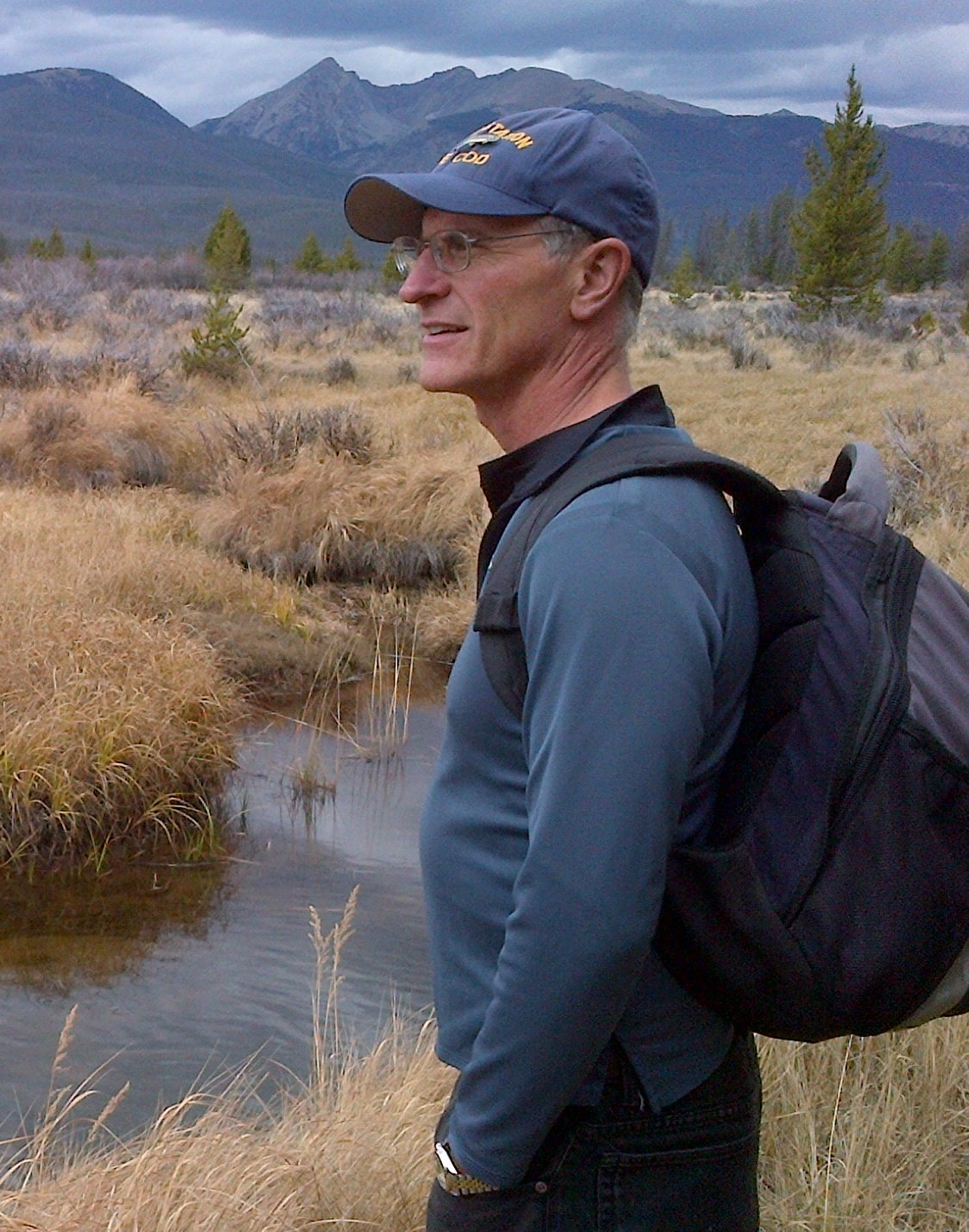
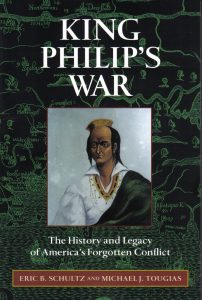 Michael Tougias, who was “King Philip” and where did this little-referenced war take place?
Michael Tougias, who was “King Philip” and where did this little-referenced war take place?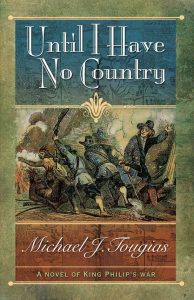 How did you become interested in the subject and why did you write not one, but two, books on it?
How did you become interested in the subject and why did you write not one, but two, books on it?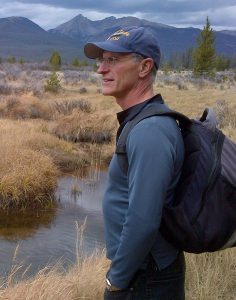 As you mentioned earlier, you also wrote a book humorously titled There’s a Porcupine in My Outhouse: Misadventures of a Mountain Man. Could you share with us how that book came about?
As you mentioned earlier, you also wrote a book humorously titled There’s a Porcupine in My Outhouse: Misadventures of a Mountain Man. Could you share with us how that book came about?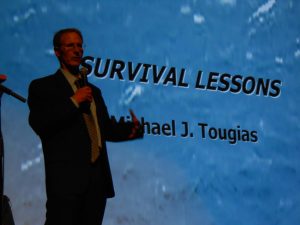 What is your next writing project?
What is your next writing project?


